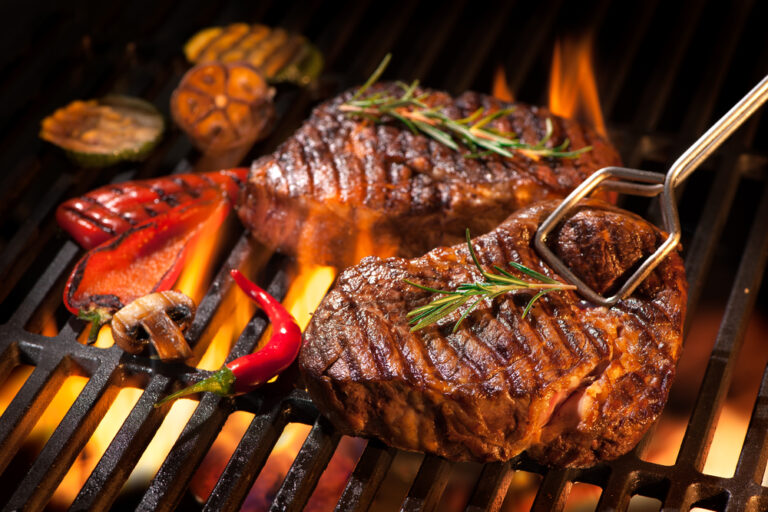
Campfires, Coleman stoves, grills and gas stoves…Does this sound like a fire safety officer’s nightmare?
There are ways to cook safely in and around the RV. Here are five tips for whipping up delicious meals while staying safe.
#1. Grills
Whether we’re talking about gas or charcoal grills — they do NOT belong inside and should never be used in your RV. Open flames are a major risk. Keep grills away from your RV. The risk is not just with flames. Equally dangerous is the poisonous gases that grill give off. Carbon monoxide is odorless and colorless and lethal. You could be dead in minutes. These gases can quickly accumulate inside your RV or blow into it if the flames are nearby.
The one exception to this rule is a grill that has been specially designed to use indoors — like an electric countertop grill.
#2. Aftermarket Appliances
If you utilize small appliances in your kitchen at home, you will surely want to bring some of them in the RV. Popular choices area a slow cooker, coffee maker, toaster, electric fry pan, and a blender or food processor. Make sure all cooking appliances are safe for indoor use, especially in an RV.
RVs rock and roll while going down the road, so make sure any after-market appliances can withstand RV life. Jarring can short out some appliances not meant for use in an RV. Look for cooking appliances sold at a camping store. Look for the Recreational Vehicle Industry Association standards and approval.

#3. Campfires
Campfires should never be built near an RV. Propane tanks and campfires are like land mines!
Make sure the wind is not strong enough or blowing toward your RV where a spark could ignite it. Find out what the regulations about open campfires are when you register at a campground and obey these rules. They exist for your safety.
#4. Fire Safety Equipment
Every RV should be equipped with basic fire safety materials. Everyone in the RV should know where the fire safety kit is and how to use it. The least you should have is a high-grade fire extinguisher that can handle all types of fires, including those involving chemicals or grease.
Better yet keep several: One is in the entrance/kitchen area, another in the bedroom, a third inside an outside storage compartment, and a fourth in the truck’s cab. Have an extinguisher always handy.
Know the type of fire extinguisher you have. Be sure these can be used by every member of your family and that they are multipurpose so they can be used on many types of fires. Be sure to maintain and replace them.
In addition, every RV should have at least one smoke detector and at least one carbon monoxide alarm.
#5. Propane Stoves
In an RV most stovetops and ovens run on propane. If you’re not used to cooking with gas, practice before you head out on the road. Gas ovens don’t heat as evenly as electric ovens. Turn things you are oven cooking as they cook so they heat evenly.
Gas burners are easier to adjust and maintain an even flame and heat up faster than electric burners. Most RV propane stoves are smaller than your home stove. Bring smaller pots for your RV kitchen.
Some RV refrigerators also run on propane. Make sure you have enough propane tanks to keep food fresh on your trip. Running out of propane can be disastrous. Carry extra but be careful about carrying and storage. Heed the directions on the tank!
With a little common sense and a respectful attitude toward fire safety, you can have a great, safe holiday. Don’t forget to have a family plan for safe evacuation in case of a fire and to practice regular fire drills.
Thanks for reading and don’t forget to comment and share below!






